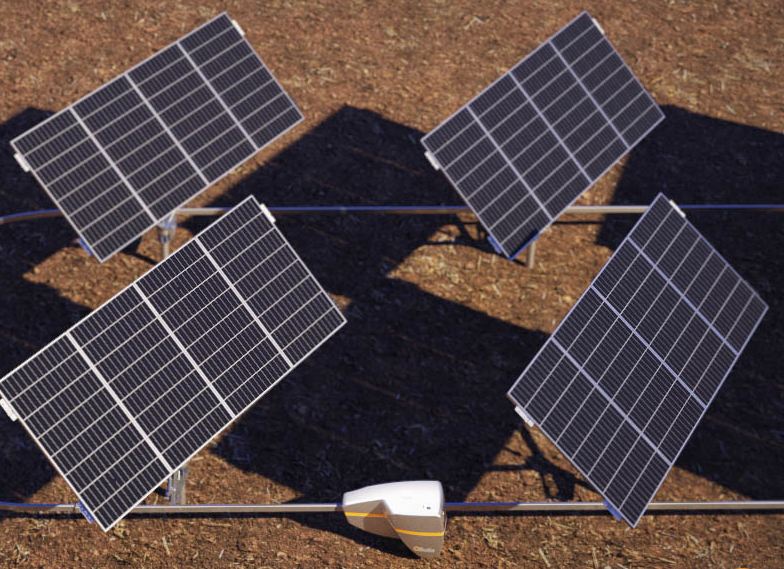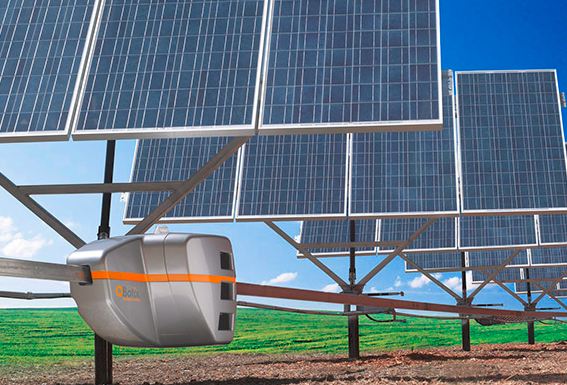Reducing the cost of solar power with mobile robots
September 10, 2012
QBotix has developed a dual-axis tracking system that uses rugged, intelligent mobile robots to dynamically operate solar power plants and maximize energy output.
The QBotix Tracking System (QTS) increases energy production of ground-mounted solar power plants by up to 40 percent over existing fixed mount systems and lowers the Levelized Cost of Electricity (LCOE) by up to 20 percent,. the company claims.
QTS utilizes a pair of autonomous robots, one primary and one back-up, to control 300 kW of solar panels with high accuracy and reliability.
The robots travel on a track and adjust each mounting system to optimally face the sun in succession. Each robot replaces hundreds of individual motors and controllers found on conventional tracking systems. The embedded intelligence and data communication capabilities of each autonomous robot optimize power plant performance and enables detailed operational knowledge at an unprecedented level.
QBotix has recently raised $6.5 million in a Series A financing from New Enterprise Associates, Firelake Capital, Siemens Venture Capital, and DFJ JAIC, bringing the total amount of financing raised to date by the company to $7.5 million. The company is composed of solar industry veterans and robotics innovators from Silicon Valley, MIT, Caltech and Stanford.
Solar tracking systems increase energy production by aiming solar modules toward the sun and tracking the sun as its relative position moves during the course of the day.
Conventional tracking systems tend to be expensive, unreliable, and complex to install and maintain. They are typically large structures requiring thousands of pounds of steel and concrete, and contain multiple failure prone controllers and motors to adjust their orientation.

